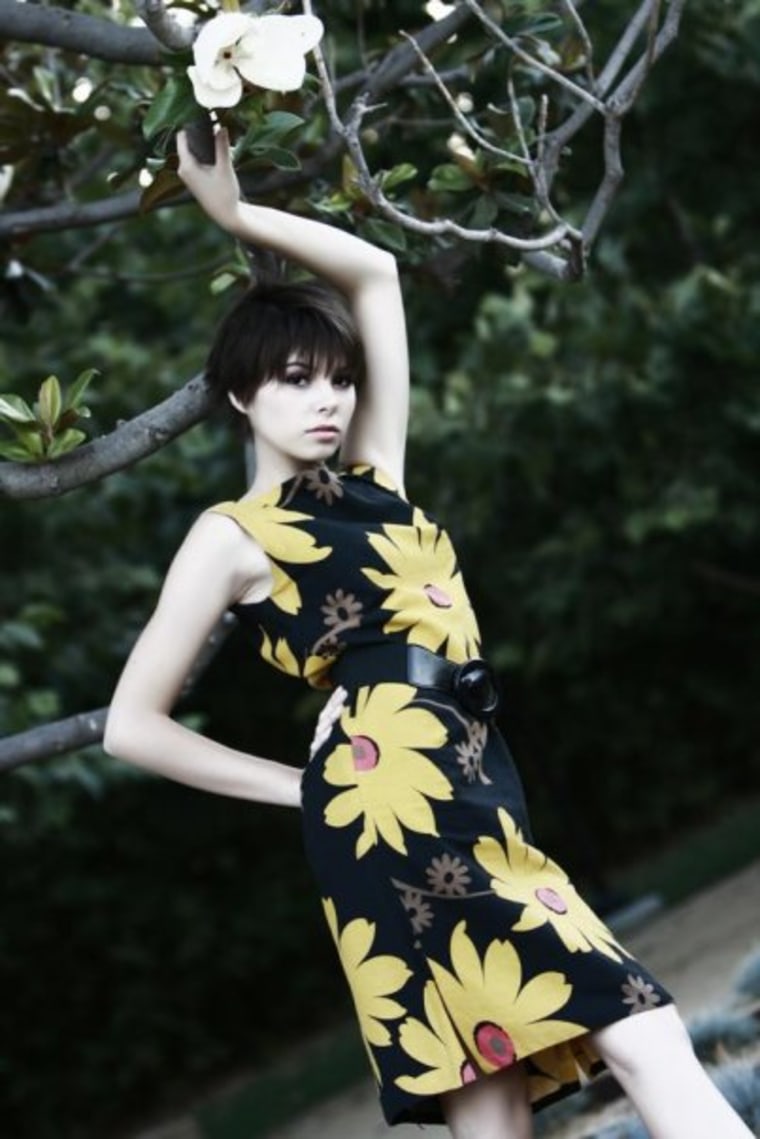Hannah Rarick wears her hair in bangs and favors hoop earnings and polka dot mini dresses. She reads Teen Set magazine and spins records by the Monkees and Beatles on her turntable. From this description, the Ohio resident might seem like your everyday woman from, say, 1967. Not quite. Rarick is a college student who wasn’t even born until 1987.
Then there’s Devon Clarke Geyer. He not only listens exclusively to ’60s music, he seeks out obscure artists like Vashti Bunyan and Phil Ochs. The Berklee College of Music sophomore says his most memorable musical experience was getting to hear the third Velvet Underground album on vinyl. Geyer is a ripe old 19.
Considering their ages, you’d think Rarick and Geyer might be going gaga over new acts like Lady Gaga. But today’s hot artists only leave them cold. According to Rarick, current music sounds like “everybody screaming at each other and talking about beating up their wives or something to that effect.”
With 1960s music, Rarick says, she “feels there was a song for every situation and every emotion.” This is why she and her best friend André Conover, 26, spend their free time shopping for vintage vinyl albums and going to concerts by Beatles revival bands and former Monkees.
Geyer, who is also a musician, explains that after growing up on the Who and Bob Dylan, he developed “a healthy disdain” for the music of his own generation: “It’s not like we have icons like they did in the 1960s with the Beatles. It’s kind of like there’s this wash of popular music and we all have just a passing knowledge of it. That’s just never appealed to me.”
A retro subculture You don’t need a weatherman to tell you Rarick and Geyer are not on the radar of mainstream culture. They represent a subculture that seems to continue with each passing generation — young people who take their cues from the Baby Boomer era.

You see other people their age on Facebook and MySpace who list the Doors and Jimi Hendrix as their favorite artists. You can hear in it musicians as diverse as the indie group the Fleet Foxes, who claim Simon & Garfunkel as a major inspiration, and retro-loving “American Idol” contestant Brooke White.
“The music of that time has a warmth that doesn’t exist in music today,” says White, who is 25 and started listening to older music as a kid. “Over time, the music became a full-on obsession and to this day classic old music is what I love to listen to.”
Eighteen-year-old San Diego native Zach Tenorio, who also attends Berklee, says a lot of the up-and-coming musicians at the college have fixations on ’60s artists. “Those were the musicians that started it all. Hendrix is a one of a kind guitarist and I can tell you that every single guitarist at Berklee listens to Hendrix — even the jazz guys. I can guarantee that.”
As Rarick’s fashion sense shows, a flair for all things retro can extend beyond music. That’s the way it is for 15-year-old Morena Gonzales-Yap, who became enamored of the ’60s styles while researching a fashion project.

“Two major fashion icons are Twiggy and Audrey Hepburn, and they’re both from the 1960s,” says the California resident. “If you study the 1940s and ’50s, the girls kind of looked the same. But Twiggy was something different, and she really changed the face of what was considered beautiful.”
Long Beach’s Chelsea Knights, 18, enjoys hunting down vintage ’60s dresses at a shopping center called Retro Row. “They have some really unique pieces,” she explains. “If you want to develop a style that’s completely your own, you go to a vintage shop and you can be completely confident that you’re not going to run into anyone else that looks like you.”
Blame the parents? For a lot of young people, it’s their moms and dads that got them fixated on older music. It’s not uncommon for parents to introduce kids to music; what’s uncommon is for kids not to reject that music and find their own when they become teenagers. With some younger people today, no such rebellion took place.
Both Geyer and White credit their folks for their musical tastes. So does Emily Elbert, a 20-year-old Texas folk musician: “My parents grew up listening to the music of that era, and so did I. I was always surrounded by it. I really loved it from as long as I can remember.”
Tenorio tells a similar story: “In my case, it was my dad. He was a young lad at that time, and was obsessed with that music. He just kind of passed it on to me.”
Adds White: “We had a jukebox in our backyard, and all we had were my parents’ records in it. So that’s just naturally what I listened to growing up.”
Being hooked on the ’60s isn’t a new thing, notes Columbia University journalism and sociology professor Todd Gitlin, who authored the book “The Sixties: Years of Hope, Days of Rage.” He’s seen this trend among college students since the 1970s and notes that other decades don’t inspire the same interest.
“There are a lot of fancy explanations that you can pile up, but in the end you have to say it’s something about the music itself,” Gitlin says. “It’s (also) about the culture. It had the meaning that your life could be more exuberant, more pleasurable, and more wild than it is. So it goes along with a sense of possibility.
“A sense of possibility is never lost,” Gitlin continues. “And since people are looking for some kind of expression of that sort of sensibility, they have it in the ’60s.”
Gitlin also says he doesn’t believe the theory that the dominance of the Baby Boomer era has led to that music overshadowing music of other generations: “Nobody is forcing anyone to listen to this stuff. It has to be something intrinsic.”
Tony Sclafani is a frequent contributor to msnbc.com.